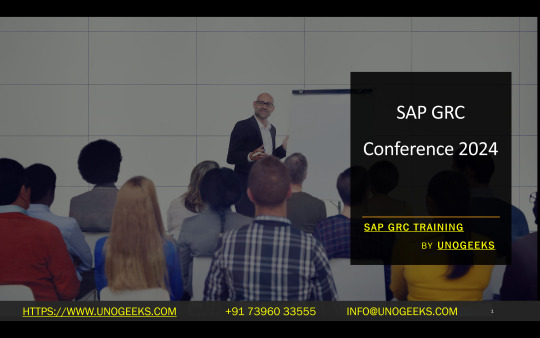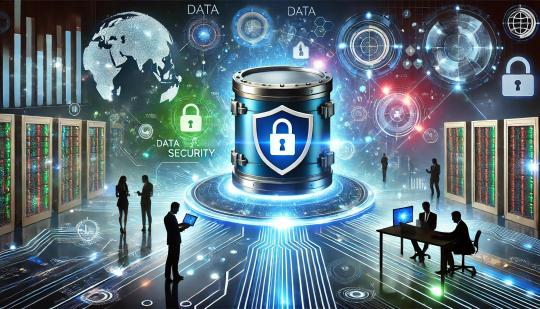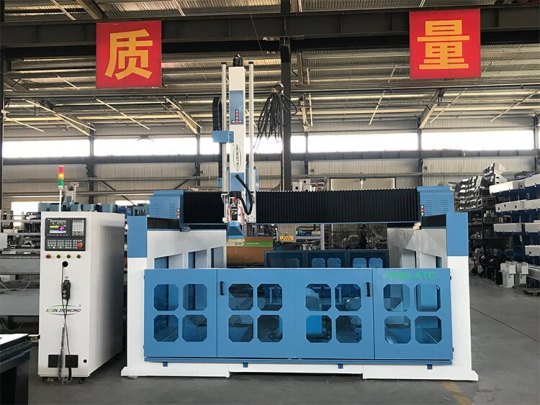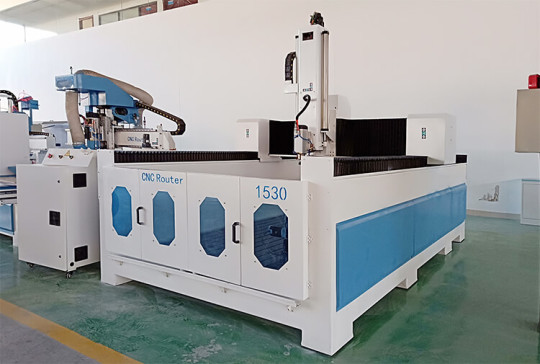#GRC Process Controls
Explore tagged Tumblr posts
Text
Navigate Compliance Challenges Seamlessly with SAP Process Control

ToggleNow offers specialized SAP Process Control services designed to strengthen your organization’s compliance framework. With in-depth expertise in SAP solutions, we provide end-to-end support, implementation, and optimization of SAP Process Control. Our focus extends beyond standard services, harnessing the power of this solution to automate compliance monitoring, risk identification, and mitigation, reducing costs, and enhancing efficiency.
What sets us apart is our tailored approach. We customize SAP Process Control to fit your unique business needs, crafting frameworks and workflows that maximize its potential in managing risks and ensuring regulatory compliance. Our adaptive strategies ensure readiness for future regulatory changes. Partner with ToggleNow to streamline compliance processes and fortify your organization’s compliance stance effectively.
Process Control Implementation:
ToggleNow specializes in seamless SAP Process Control implementation services, ensuring a smooth integration tailored to your organization’s needs. Leveraging our expertise, we guide you through the entire implementation journey, from initial planning and configuration to deployment. Our approach focuses on understanding your unique requirements, designing a roadmap, and executing a structured implementation strategy. This service ensures that your SAP Process Control system is set up efficiently, aligning with your compliance objectives and business processes.
1 note
·
View note
Text
SAP GRC Conference 2024

The Future of Integrated GRC: Highlights and Anticipations from the SAP GRC Conference 2024
The SAP GRC Conference 2024 was a resounding success. Held in Brussels, it brought together industry experts, SAP customers, and partners for cutting-edge discussions on Governance, Risk, and Compliance (GRC). This groundbreaking event united the former SAP for Internal Controls, Compliance, and Risk Management and the SAP for Cyber Security and Data Protection conferences, exemplifying the increasing convergence of GRC disciplines.
Key Themes and Takeaways
Business-Integrated GRC: A recurring theme was the need for GRC to become less siloed and more deeply woven into organizational strategy and decision-making. Leaders emphasized that proactive, integrated GRC can create a competitive advantage rather than function as a necessary overhead cost.
Automation and AI: The conference highlighted how automation and artificial intelligence reshape GRC processes. Intelligent tools can take on routine tasks, risk pattern identification, and predictive analytics, freeing GRC professionals to focus on complex issues and strategic planning.
The Evolving Risk Landscape: Discussions centered around the evolving risk landscape in the digital age. Topics like third-party risk, supply chain disruptions, and rapidly changing regulatory frameworks were hotbeds of conversation. The necessity for agile GRC systems that can adapt to these shifting dangers was paramount.
Speaker Insights and Highlights
Michael Rasmussen (GRC 20/20): This GRC thought leader offered a visionary keynote on the future of business-integrated GRC, the role of advanced technologies, and how organizations can leverage GRC for transformation and resilience.
Charlotte Hedemark (FERMA): The newly appointed FERMA President shared perspectives on risk management in the face of recent disruptions, strategies for building risk maturity, and fulfilling board-level expectations.
SAP Leadership: SAP executives unveiled future roadmaps for the SAP GRC suite. They focused on tighter integration across modules, enhanced automation capabilities, and a user-centric approach for better risk insights and reporting.
Beyond the Sessions: Networking and Collaboration
The SAP GRC Conference 2024 thrived on the energy of the GRC community. Networking opportunities allowed for best practice sharing and solution comparisons and sparked potential new partnerships. The vibrant exhibition floor showcased innovative solutions and cutting-edge technologies shaping the future of risk and compliance.
Looking Ahead
The SAP GRC Conference 2024 underscored the pivotal moment GRC finds itself in. The focus is shifting from mere compliance to strategic, value-driven GRC that empowers businesses to tackle new challenges and seize opportunities in a dynamic global landscape. GRC professionals must embrace these themes and drive innovation within our organizations to secure our collective futures.
youtube
You can find more information about SAP GRC in this SAP GRC Link
Conclusion:
Unogeeks is the No.1 IT Training Institute for SAP GRC Training. Anyone Disagree? Please drop in a comment
You can check out our other latest blogs on SAP GRC here – SAP GRC Blogs
You can check out our Best In Class SAP GRC Details here – SAP GRC Training
Follow & Connect with us:
———————————-
For Training inquiries:
Call/Whatsapp: +91 73960 33555
Mail us at: [email protected]
Our Website ➜ https://unogeeks.com
Follow us:
Instagram: https://www.instagram.com/unogeeks
Facebook: https://www.facebook.com/UnogeeksSoftwareTrainingInstitute
Twitter: https://twitter.com/unogeeks
#Unogeeks #training #Unogeekstraining
2 notes
·
View notes
Text
Why SAP global certification is the Best program for career growth & global job opportunity?
What is SAP? SAP is System Application and Products in Data processing. Nowadays having a proper certification can significantly boost ones career and open doors for global job opportunities. One such leading programs is SAP which provides enterprise software solutions. SAP software is an European multinational company, they focus on providing software solutions for better understanding and management of business and their customers.
Some of the comprehensive courses provided by SAP are finance, logistics, human resources and many more. The course certification is acknowledged on global basis.
One of the key advantages of the SAP global certification program is its recognition worldwide. With over 400,000 customers in more than 180 countries using SAP solutions, there is a high demand for professionals with SAP skills across the globe .This opens up a plethora of job opportunities on a global scale.
Benefits of SAP courses
Streamlined Processes: SAP helps organizations streamline their business processes by automating tasks, eliminating the manual effort, and reducing inefficiencies.
Enhanced Decision-Making: the course provides robust data management and analytics capabilities, enabling organizations to access real-time, accurate information.
Improved Collaboration and Communication: It enables the seamless integration and data exchange between different functional areas, enhancing cross-functional collaboration and teamwork.
Increased Visibility and Control: SAP offers comprehensive visibility into organizational data, processes, and operations.
Scalability and Flexibility: SAP solutions are scalable and flexible, accommodating the changing needs and growth of organizations.
Enhanced Customer Experience: SAP's customer relationship management (CRM) solutions enable organizations to deliver a personalized and exceptional customer experience.
Improved Supply Chain Management: It enables organizations to improve demand planning, inventory management, procurement, and logistics, resulting in reduced costs, improved order fulfillment, and better customer satisfaction.
Compliance and Risk Management: It provides functionalities for governance, risk management, and compliance (GRC), helping organizations mitigate risks, ensure data security, and demonstrate compliance with legal and industry regulations.
Innovation and Digital Transformation: SAP embraces emerging technologies and drives innovation to support organizations in their digital transformation journey.
As multinational companies expand their operations across borders, they require professionals who can support and manage their SAP software system worldwide. This opens up many possibilities for career growth in international work experiences and also being an SAP certified professional it can also lead to higher earning potential, individuals with an SAP certificates tend to earn more as compared to their non-certified counterparts. This financial incentive further emphasizes the value of investing in an SAP global certification for career growth.
Job opportunities in SAP
SAP Consultant: SAP consultants provide expertise and guidance on implementing, configuring, and customizing SAP solutions to meet the specific needs of organizations
SAP Functional Analyst: SAP functional analysts focus on understanding business requirements and translating them into functional specifications for SAP solutions.
SAP Technical Developer: They are responsible for developing, customizing, and maintaining SAP applications.
SAP Project Manager: SAP project managers oversee the planning, execution, and delivery of SAP implementation or upgrade projects
SAP Administrator: SAP Basis administrators manage the technical infrastructure of SAP systems. They are responsible for system installation, configuration, monitoring, performance optimization, and security management of SAP landscapes
SAP Data Analyst: SAP data analysts focus on managing and analyzing data within SAP systems. They extract and manipulate data, perform data validation, create reports and dashboards.
SAP Supply Chain Consultant: SAP supply chain consultants work on projects related to supply chain management, procurement, inventory management, logistics, and production planning using SAP solutions.
Why is SAP global certification important?
SAP Global Certification is important as it validates an individual’s skills, acquires an industry recognition, provides a competitive advantage, strengthens career opportunities, opens up global job prospects, promotes continuous learning, and instills employer confidence. Thus considered a valuable investment for professionals seeking career growth in the field of SAP and for organizations looking to hire skilled SAP professionals.
#course#sap course#education#learning#career#student#careeropportunities#sap online training#productivity
2 notes
·
View notes
Text
Navigating the Future of GRC and Access Governance in SAP Ecosystems
A New Era of Security and Access Governance
Governance, Risk, and Compliance (GRC) and Access Governance are undergoing major changes due to digital growth and stricter regulations. As organizations connect more data and systems, they’re shifting from isolated security practices to proactive, integrated compliance processes. Raghu Boddu, founder of ToggleNow and a seasoned leader in SAP GRC, has observed these shifts closely.
“Fifteen years ago, most companies didn’t treat security as a separate function—it was part of Basis administration,” Raghu explains. “Today, security is essential, and organizations know it’s crucial for protecting data, compliance, and brand reputation.”
New Market Realities and Demand for Integrated GRC Solutions
SAP has long been at the forefront of GRC, offering tools to help both finance and IT teams tackle compliance challenges. Solutions like SAP Access Control and Identity Access Governance (IAG) provide the flexibility to manage today’s security needs while adapting to future ones. As businesses adopt hybrid and multi-cloud systems, managing security across different platforms has become more complex. This is where SAP’s Business Technology Platform (BTP) shines. BTP connects SAP and non-SAP applications seamlessly, creating a secure, compliant ecosystem. “BTP and SAP Identity Services have changed the game for multi-cloud environments,” says Raghu. “Today, integration is nearly seamless thanks to SAP’s open APIs and connectors. This has allowed companies to manage security across hybrid systems without needing extensive customization.”
Regional Insights: GRC Maturity and Market Growth
The GRC and Identity Access Management (IAM) markets vary widely across regions, shaped by local regulations and market maturity. In the U.S., SoX compliance has driven strict GRC standards for years. Many American companies have developed sophisticated GRC processes, particularly around data security and financial compliance. Meanwhile, regions like India are rapidly catching up.
“The growth potential in India is huge,” Raghu shares. “Over the last five years, Indian businesses have started treating GRC as essential, not optional.”
In both the U.S. and other markets, companies are increasingly adopting automation and hybrid identity solutions to handle complex regulations. This shift reflects a global move toward integrated compliance, with GRC becoming a core business priority rather than a “tick-the-box” function. As Raghu adds, “It’s inspiring to see GRC prioritized as part of strategy, not just an audit requirement.”
The Future of GRC: AI-Driven Compliance and Embedded Solutions
a) AI and Automation in GRC
Automation and AI are quickly transforming GRC from a reactive function into a proactive one, identifying risks before they become problems. With AI-driven GRC, systems can automatically analyze data to help companies detect potential compliance issues and manage risk more intelligently. SAP’s GRC tools with AI simplify compliance processes and improve decision-making, allowing teams to focus on strategic priorities.
Raghu highlights the potential of AI in GRC: “AI has incredible potential in the GRC space. It’s about giving businesses more power to manage risk with accuracy, while reducing manual efforts and errors.”
b) Embedding Compliance into Daily Processes
Looking forward, GRC will be embedded directly within applications and workflows, constantly monitoring for risks and responding to threats as they arise. Raghu envisions this future: “In the next five years, GRC as a standalone system may fade. Instead, it will be part of daily workflows, where applications flag risks and suggest controls in real time. AI will automate many compliance tasks, cutting down manual efforts.”
He adds, “Imagine GRC as a tool that proactively flags a potential access issue based on historical patterns—like a security recommendation engine. This proactive risk management approach is where AI will make the most impact.”
About Raghu Boddu and ToggleNow: Innovating in GRC and SAP Integration
Raghu Boddu, founder of ToggleNow, has over two decades of experience in SAP GRC and has witnessed the industry’s evolution firsthand. He started ToggleNow to address complex GRC challenges, helping companies make compliance efficient and accessible. With solutions that streamline risk management and improve security, ToggleNow has become a trusted partner for organizations operating in SAP environments.
Raghu is also a published author, with books such as SAP Access Control 12.0 Comprehensive Guide, SAP Process Control 12.0 Comprehensive Guide, and SAP Cloud IAG eBite. The books offer practical insights into implementing SAP GRC solutions effectively. His books emphasize not only the technical aspects but also strategic best practices, making them valuable resources for GRC professionals.
ToggleNow has been particularly impactful in areas like SAP integration and GRC automation, where Raghu’s team develops innovative tools that simplify complex processes. “At ToggleNow, our focus is to help clients build a compliant, adaptable GRC framework that meets today’s demands while preparing for tomorrow’s,” says Raghu.
Read more: https://togglenow.com/blog/navigating-the-future-of-grc-and-access-governance-in-sap-ecosystems/
#sap role design best practices
#sap security role design best practices
#sap security role design document
#role design in sap security
#sap role redesign
#sap role design
#sap security role redesigning
#redesign of sap authorizations
#sap security role design best practices#sap authorization review#sap role design#sap sod conflicts#sap security role design document#sap authorization
0 notes
Text

Listing Reference: POST 06/08: ACCOUNTING CLERK: SUPERVISOR (5 X POSTS)Listing Status: Open Position Summary - Company: Department of Defence – Financial Management Division - Industry: Government / Public Sector - Job Category: Finance / Accounting - Location: Pretoria and Cape Town, South Africa - Contract Type: Permanent - Remuneration: R308 154 – R362 994 per annum (Level 7) - EE Position: Yes (Employment Equity principles apply) - Closing Date: Introduction The Department of Defence is inviting suitably qualified candidates to apply for the position of Accounting Clerk: Supervisor (5 posts) within the Financial Management Division. This opportunity is ideal for individuals with experience in finance and accounting, particularly within the public sector. The role involves overseeing financial management services, ensuring compliance with financial policies, and supporting budget management functions. If you have strong analytical skills, financial acumen, and experience in financial reporting, this position could be an excellent fit for you. Job Description The Accounting Clerk: Supervisor will be responsible for the provision of financial management services within the designated area of responsibility. This includes assisting in budget management, executing financial plans, and ensuring compliance with financial governance, risk, and compliance (GRC) requirements. Key Responsibilities: - Provide financial management services within the assigned unit. - Support the execution and monitoring of financial plans. - Ensure application of budget management policies and instructions. - Maintain and oversee the Financial Management System (FMS) operations. - Assist with financial matters related to processes and procedures. - Implement the Medium-Term Expenditure Framework (MTEF) in financial planning. - Participate in the preparation of the Estimate of Expenditure (EOE). - Ensure budget control and expenditure monitoring. - Provide financial reporting and ensure compliance with financial governance policies. - Implement internal controls and financial monitoring mechanisms. - Provide financial advice and guidance to relevant stakeholders. - Administer financial audit information and inquiries. - Ensure compliance with Occupational Health and Safety (OHS) standards in allocated facilities. Ideal Candidate The successful candidate must have a Grade 12 (NQF Level 4) certificate with 3 to 5 years of relevant experience in a finance environment. Alternatively, a National Diploma or Bachelor’s Degree in Finance/Accounting with at least 3 years of experience at Level 5 is preferred. Minimum Requirements: - Grade 12 (NQF L4) or equivalent qualification. - 3 – 5 years of relevant experience in finance/accounting. - Completion of applicable mainframe/system courses. - Understanding of financial management within the Public Service or Private Sector. - Knowledge of Public Finance Management Act (PFMA) and Supply Chain Management (SCM). - Proficiency in financial management systems and report writing systems (IC). - Knowledge of the Standard Chart of Accounts (SCOA). - Experience in Conventional Service Writing and staff work. - Familiarity with Departmental Accounting processes. Role Responsibility The primary role of the Accounting Clerk: Supervisor is to ensure sound financial management practices within the designated unit. This includes: Financial Management & Budgeting: - Implementing financial policies and frameworks. - Managing financial resources efficiently. - Assisting with budget formulation and expenditure monitoring. - Capturing financial data into the Financial Management System (FMS). - Ensuring budget adjustments are accurately reflected. Financial Compliance & Risk Management: - Monitoring financial transactions for compliance. - Supporting audit preparation and internal controls. - Investigating and reporting financial misconduct. - Contributing to risk management strategies. Financial Reporting: - Extracting and analyzing financial reports. - Distributing financial statements to relevant stakeholders. - Making recommendations based on financial reports. Operational & Administrative Support: - Managing financial documentation and recordkeeping. - Providing financial advice to department heads. - Supporting the preparation of the Annual Performance Plan (APP). Skills & Attributes Candidates should possess the following skills and attributes to succeed in this role: Technical Skills: - Strong knowledge of financial reporting systems. - Understanding of budget management principles. - Familiarity with government financial regulations and policies. - Experience using Microsoft Office (Excel, Word, PowerPoint). - Knowledge of Supply Chain Management (SCM). Soft Skills: - Excellent communication and interpersonal skills. - Strong analytical and problem-solving abilities. - High level of integrity and ethical conduct. - Ability to work under pressure and meet deadlines. - Detail-oriented with strong organizational skills. - Ability to manage multiple financial projects simultaneously. Application Process Interested candidates should submit their applications as follows: - By Post: Financial Management Division, DFSS, Career Management Section, Private Bag X137, Pretoria, 0001. - By Email: [email protected]. - Hand-Delivery: Poynton building, 195 Bosman Street, Pretoria (Wooden Post Box No. 5 at Reception). Enquiries: - Def Sec BMO: Mr. E. Ridgard – Tel: (012) 355 5510 - SA Army: Ms. T.M. Sekgobela – Tel: (012) 355 1238 - SA Airforce: Mr. S.R. Molekwa – Tel: (012) 312 2209 - SA Navy: Ms. R.E. Mamaguvhi – Tel: (012) 339 4220 Employment Equity Considerations The Financial Management Division is committed to employment equity and diversity. Preference will be given to African Males, African Females, Indian Males, Coloured Males, and Persons with Disabilities in line with the Employment Equity Act. Shortlisted candidates will undergo: - Practical Assessment: Technical and generic requirements evaluation. - Integrity Assessment: Oral examination, computer-based testing, and written evaluation. This is an exciting opportunity for finance professionals looking to advance their careers in the public sector. As an Accounting Clerk: Supervisor, you will play a crucial role in financial management, compliance, and budgeting. If you have the required qualifications and experience, don’t miss this chance to join the Department of Defence – Financial Management Division and contribute to South Africa’s financial governance. Apply now before the closing date! Read the full article
0 notes
Text
Gerber Centrifuge FM-GRC-A100
Fison Gerber Centrifuge features a top speed of 6000 rpm for fast sample processing, boosting lab efficiency. Its durable metal housing, corrosion-resistant stainless steel and frequency converter motor ensure long-term reliability. Equipped with an LCD control panel, programmable memory and an automatic lid-lock for safety and seamless operation.

0 notes
Text
This blog explores how SAP enhances enterprise cybersecurity through its integrated solutions like SAP Governance, Risk, and Compliance (GRC), SAP Enterprise Threat Detection, and SAP Identity and Access Management. SAP embeds advanced security features such as real-time threat detection, encryption, and role-based access control to safeguard data and business processes. Best practices, including system updates, periodic audits, and consistent user training, further strengthen security. The blog highlights the role of AI and ML in automating threat detection and response, ensuring proactive defense against evolving cyber threats. Future trends include Zero Trust security, blockchain integration, and strengthened cloud security measures.
#job#staffaugmentation#sap#confidence#resume#motivationalquotes#hiring#unitedstates#placement#staff augmentation
0 notes
Text
The Policy Management Software Market is projected to grow from USD 1335 million in 2024 to an estimated USD 4437 million by 2032, with a compound annual growth rate (CAGR) of 16.2% from 2024 to 2032.Policy management software is gaining prominence as organizations worldwide strive for streamlined governance, risk management, and compliance (GRC) processes. This technology facilitates the creation, distribution, and monitoring of policies within organizations, ensuring regulatory compliance, reducing risks, and enhancing operational efficiency. With digital transformation accelerating across industries, the policy management software market has become a critical component of enterprise IT solutions.
Browse the full report at https://www.credenceresearch.com/report/policy-management-software-market
Market Overview
The global policy management software market has seen significant growth in recent years. According to industry reports, this market is expected to maintain a strong compound annual growth rate (CAGR) over the next decade. The increasing focus on regulatory compliance, cybersecurity, and operational transparency has driven organizations to adopt policy management solutions.
Policy management software enables organizations to centralize and automate policy lifecycle management, making it easier to enforce compliance with internal protocols and external regulations. This software is particularly valuable for sectors with stringent regulatory requirements, such as healthcare, finance, and manufacturing.
Key Drivers of Market Growth
Regulatory Compliance and Risk Mitigation Governments and industry bodies worldwide are imposing stricter regulations to ensure transparency and accountability. For instance, GDPR in Europe and HIPAA in the United States mandate strict data handling policies. Policy management software helps organizations navigate these complex regulations, minimizing legal risks and potential penalties.
Rise in Cybersecurity Threats As cyber threats become more sophisticated, organizations need robust policies to safeguard sensitive information. Policy management software ensures consistent implementation of cybersecurity protocols and helps organizations quickly adapt to emerging threats.
Digital Transformation Initiatives The integration of digital technologies across industries has increased the complexity of operational environments. Policy management solutions offer centralized control and seamless integration with existing systems, enabling organizations to manage policies across diverse platforms effectively.
Remote Work Dynamics The shift towards remote and hybrid work environments has necessitated stringent policies around data access, security, and employee conduct. Policy management software plays a pivotal role in ensuring that remote teams adhere to organizational guidelines.
Challenges in the Market
Despite its growth potential, the policy management software market faces challenges such as:
High Initial Costs: Some organizations perceive policy management solutions as expensive, especially SMEs with limited budgets.
Resistance to Change: Employees and management may resist adopting new tools, particularly in traditionally run businesses.
Integration Issues: Ensuring compatibility with legacy systems can be a hurdle, delaying implementation.
Future Prospects
The future of the policy management software market is promising, driven by advancements in artificial intelligence (AI) and machine learning (ML). AI-powered solutions can offer predictive analytics, automated compliance checks, and real-time policy recommendations, enhancing operational efficiency.
Moreover, as organizations expand globally, the need for multi-jurisdictional compliance will grow, further fueling demand for sophisticated policy management solutions. Emerging markets in Asia-Pacific and Latin America are expected to witness substantial adoption due to rapid industrialization and digitalization.
Key Player Analysis:
Amdocs
ComplianceBridge
Ericsson
Huawei Technologies Co. Ltd.
Intracom Telecom
LogicManager
Mitratech
Navex Global
Openet
Tekelec
Segmentation:
By Component:
Solution
Services
By Deployment Model:
On-premise
Cloud-based
By Enterprise Size:
Large Enterprises
Small and Medium-sized Enterprises
By Industry Vertical:
BFSI
IT and Telecom
Energy and Utilities
Healthcare
Government and Defense
Manufacturing
Retail
Others
By Region
North America
U.S.
Canada
Mexico
Europe
Germany
France
U.K.
Italy
Spain
Rest of Europe
Asia Pacific
China
Japan
India
South Korea
South-east Asia
Rest of Asia Pacific
Latin America
Brazil
Argentina
Rest of Latin America
Middle East & Africa
GCC Countries
South Africa
Rest of the Middle East and Africa
Browse the full report at https://www.credenceresearch.com/report/policy-management-software-market
About Us:
Credence Research is committed to employee well-being and productivity. Following the COVID-19 pandemic, we have implemented a permanent work-from-home policy for all employees.
Contact:
Credence Research
Please contact us at +91 6232 49 3207
Email: [email protected]
0 notes
Text
Strengthening Data Compliance and Security: How Delphix Protects Businesses in a Digital World
In today’s digital age, data compliance and security have become crucial topics for businesses across industries. With growing data privacy regulations and increasing cyber threats, companies face mounting pressure to safeguard their information assets while ensuring data protection and privacy compliance with a host of legal standards. However, achieving both compliance and security can be challenging, especially as data volumes grow and organizations move highly-sensitive information onto digital platforms.

Delphix Data Compliance and Security offers powerful tools to help companies address these challenges. In this article, we’ll break down what data compliance and security mean, why they’re essential for business operations, the common hurdles companies face, and how Delphix’s capabilities can help overcome these barriers.
What are data compliance and security, and why do they matter?
Data compliance involves adhering to legal, regulatory, and ethical standards that govern the collection, storage, and use of data. These standards can vary depending on industry and geography, but some common frameworks include GDPR (General Data Protection Regulation), HIPAA (Health Insurance Portability and Accountability Act), and CCPA (California Consumer Privacy Act). Non-compliance with these regulations can lead to legal consequences, financial penalties, and reputational damage.
Data security, on the other hand, focuses on protecting data from unauthorized access, breaches, and leaks. Security measures include encryption, access controls, and monitoring systems to ensure data is protected from both internal and external threats. With the rise of sophisticated cyberattacks, maintaining robust data security is critical to preserving customer trust and protecting business assets.
For companies, data compliance and security aren’t just legal requirements; they’re foundational elements of responsible data management. Failing to meet these standards can lead to severe financial repercussions and erode customer trust, making it imperative for businesses to prioritize both.
Common Data Compliance and Security Challenges Businesses Face
Despite best efforts, businesses often encounter several challenges in meeting data compliance and security standards:
Complex Regulatory Requirements: Navigating different regulatory requirements across regions and industries can be overwhelming, especially when data is stored and accessed globally.
Data Proliferation: As organizations generate and store vast amounts of data, keeping track of sensitive information and ensuring it remains compliant becomes a significant challenge.
Risk of Data Breaches: With cyber threats on the rise, protecting sensitive information from breaches and unauthorized access is more complex than ever.
Data Privacy and Access Control: Balancing data accessibility with privacy protection is essential but difficult, particularly when data is shared across multiple departments or applications.
IT Governance, Risk, and Compliance (IT GRC): Ensuring that data governance, risk management, and compliance align with organizational goals can be challenging, as these areas often overlap.
These challenges require sophisticated tools and strategies. Delphix steps in to provide the capabilities needed to address each of these concerns effectively.
How Delphix Data Compliance and Security Helps Businesses Overcome These Challenges
Automated Data Masking for Privacy Protection Delphix offers automated data masking, a process that replaces sensitive information with realistic but fictional data. This feature is invaluable for protecting privacy during development and testing, as it prevents unauthorized access to actual sensitive data. By masking data automatically, Delphix helps organizations meet regulatory standards while maintaining data usability, ensuring both data protection and privacy compliance.
Regulatory Compliance Support With Delphix, businesses can align with multiple compliance frameworks, including GDPR, HIPAA, and CCPA. Delphix’s platform includes features designed to simplify audits and compliance reporting, helping companies meet regulatory standards with minimal friction. For organizations seeking data compliance services , Delphix provides the support needed to manage compliance with greater ease.
Data Control and Access Management Delphix enables granular access controls, allowing organizations to manage who can access sensitive data and under what circumstances. By setting strict access policies and monitoring usage, businesses can significantly reduce the risk of unauthorized access and ensure compliance with data privacy requirements.
Real-Time Monitoring and Auditing Delphix provides real-time monitoring and auditing tools that allow businesses to track data access and activity across the organization. These insights enable companies to detect and respond to potential security incidents promptly, adding a layer of protection that enhances both security and compliance.
Accelerated Data Delivery with Security in Mind Delphix’s platform accelerates the process of data delivery for development, testing, and analytics while embedding security throughout. This allows organizations to innovate and adapt quickly without sacrificing the safety of their data or regulatory compliance.
Why Companies Choose Delphix for Data Compliance and Security
Delphix isn’t just a data platform; it’s a comprehensive solution tailored to modern compliance and security needs. By automating data privacy processes, supporting compliance requirements, and enhancing data access control, Delphix empowers businesses to navigate complex regulatory landscapes and safeguard their data assets. Companies that choose Delphix can focus on innovation and growth with the confidence that their data compliance and security needs are met.
Protect Your Business with PreludeSys and Delphix
At PreludeSys, we understand the importance of strong data compliance and security measures. As a Delphix partner, we’re here to provide you with the guidance, expertise, and solutions you need to implement and maintain Delphix Data Compliance and Security. Ready to enhance your data protection strategy? Contact PreludeSys today to learn how our data compliance services can support your business in staying compliant and secure.
#data security services#delphix data masking#data compliance services#data protection and privacy compliance#it governance risk and compliance
0 notes
Text
Automatic Tool Change Foam Router EPS CNC Carving Machine
CNC Router Foam Cutting Machine
Automatic Tool Change Foam Router, also known as an EPS CNC Carving Machine with Automatic Tool Change, is a specialized computer-controlled machine designed for cutting, carving, and shaping Expanded Polystyrene (EPS) foam materials. These machines are equipped with an automatic tool change system that allows for the seamless swapping of cutting tools during the CNC routing process.The 3d CNC router milling machine can be seamlessly spliced, suitable for various shapes.This CNC router foam machine also can be used in embossing, lettering, hollowing, cutting, vertical carving, round carving, etc.

This 4 axis cnc foam router is a little special when compared with the ordinary four axis machine. The conventional 4-axis construction has two types: one is that the spindle can swing ±90 degrees; the other refers to the rotary axis. Either of the two can be called the ordinary 4-axis cnc machine. What makes this machine special is that it is actually a 2 in 1 cnc foam router as it has the two types 4 axis construction stated above. Based on this design, there is no doubt that it has more possibilities than a normal 4-axis machine. The 4 axis cnc foam router here is perfect for 3D polystyrene shapes making.
4 Axis 3d CNC Router Milling Machine
EPS/foam CNC router usually comes with a big working dimension for carving and cutting large-size workpieces of wood, aluminum, and styrofoam. It can also be equipped with an ATC spindle and a rotary device for complex, heavy-duty, and long-term work. It is widely used to process and carve wood and styrofoam automotive, ship or other molds, and GRG or GRC decorations, and architecture models.
Automatic Tool Change Foam Routers are specifically designed to work with EPS foam materials. EPS foam is commonly used in various industries for insulation, packaging, and creative applications due to its lightweight and easy-to-cut properties.Like other CNC machines, EPS CNC carving machines with automatic tool change offer high precision and accuracy. The CNC technology ensures that complex designs, intricate patterns, and 3D shapes can be executed with precision.
Foam Router EPS CNC Carving Machine
Packaging: Creating custom foam inserts for protecting fragile items during shipping.
Sculpture and Art: Carving intricate sculptures and art pieces from EPS foam.
Architectural Design: Crafting decorative elements and architectural details.
Set Design: Producing props and scenery for theater, film, and events.
Sign Making: Crafting 3D signs, logos, and lettering.

This cnc router foam cutter is designed especially for custom EPS expanded polystyrene foam moldings. The molded foam is usually used for casting & founding. Three-axis construction with 1500x3000mm machining size (5×10 in English); (need 4th rotary? please check out foam milling machine with rotary axis) Dirt guard is designed on X Y Z axes particular for cnc foam machining, which keeps the precise transmission parts away from the machining debris. The table is made of aluminum profiles. It is ideal for EPS EVA foam machining as well as wood machining. CNC router foam cutter for custom EPS EVA molding for sale at a reasonable price now!
Application Scope

How Many Kinds of CNC Foam Router Are There?
Well, this need to see from which perspective. From a motion axis quantity perspective, there are 3 axis, 4 axis and 5 axis cnc foam router; from application point of view, there are cnc foam router for polystyrene, for woods and for aluminum.
0 notes
Text
Governance and Risk Compliance: A Comprehensive Approach by GRC Essentials Pvt Ltd
In today’s complex business landscape, effective governance and risk compliance (GRC) are critical for organizations aiming for sustainable growth. GRC Essentials Pvt Ltd recognizes that a robust GRC framework is essential for navigating financial uncertainties while ensuring compliance with ever-evolving regulations. Our commitment is to building strong partnerships with our clients as we tailor our services to meet your specific needs and requirements.

Understanding Governance and Risk Compliance
Governance refers to the structures and processes guiding an organization’s decision-making and performance. It ensures accountability, fairness, and transparency in relationships with stakeholders. Risk compliance, on the other hand, focuses on identifying, assessing, and mitigating risks to ensure adherence to laws, regulations, and internal policies. Together, governance and risk compliance form a solid foundation for organizations to operate effectively and responsibly.
Why Governance and Risk Compliance Matter
Regulatory Adherence: As regulations become increasingly stringent, organizations must ensure compliance to avoid penalties and reputational damage. GRC Essentials Pvt Ltd offers expertise in navigating these regulatory landscapes, ensuring your business meets all requirements.
Risk Management: Identifying potential risks—be they financial, operational, or reputational—is crucial for long-term success. Our experienced team utilizes advanced risk assessment tools to pinpoint vulnerabilities and develop tailored strategies, allowing your organization to focus on growth while we handle the risks.
Enhanced Decision-Making: A strong governance framework empowers organizations to make informed decisions. With effective GRC practices, your business can operate with greater agility and confidence, leading to improved financial outcomes.
Stakeholder Trust: Transparency and accountability foster trust among stakeholders, including clients, investors, and employees. By prioritizing governance and risk compliance, your organization can enhance its reputation and build lasting relationships.
Our Comprehensive GRC Services
At GRC Essentials Pvt Ltd, we offer a range of services designed to strengthen your organization’s governance and risk compliance framework:
Financial Planning: Our tailored financial planning services help your organization achieve its financial goals while ensuring compliance with industry standards. We collaborate closely with you to understand your needs and develop a strategy aligned with your vision.
Credit License Services: Navigating the complexities of credit licensing can be challenging. Our experts guide you through the process, ensuring compliance with all regulatory requirements while obtaining necessary licenses for effective operation.
Assurance Services: Our assurance services assure you that your financial statements and reports are accurate and compliant. We conduct thorough audits and assessments, offering insights to strengthen your internal controls and risk management processes.
Conclusion
In today's world, strong partnerships are crucial for success, and finding a trusted advisor is essential. At GRC Essentials Pvt Ltd, our extensive experience and knowledge in financial services enable us to provide customized solutions that address your organization's unique challenges. By focusing on governance and risk compliance, we can collaborate to establish a resilient framework that safeguards your business and positions it for sustainable growth. Let us help you navigate the complexities of the current business landscape, ensuring that your organization thrives in an ever-evolving environment.
0 notes
Text
Opt For Transformative Building Designs With Cladding Spcialists
Within the field of modern architecture, innovative, sustainable, and aesthetically pleasing building designs are becoming more and more prevalent. Specialists in cladding are essential to the realization of revolutionary architectural concepts because they provide knowledge of materials, methods, and creative solutions that improve the built environment. Cladding experts help create iconic structures that define cityscapes and inspire generations, from famous skyscrapers to sustainable residential developments. This article examines the various ways that experts in cladding contribute to innovative architectural ideas.

MATERIAL INNOVATION:
In order to push the limits of architectural design, cladding professionals are at the forefront of material innovation. They are continuously investigating new materials and technologies. Cladding experts use a broad range of materials to accomplish a variety of aesthetically pleasing and useful goals, from conventional materials like stone and brick to cutting edge materials like glass-reinforced concrete (GRC) and carbon fiber composites.
For instance, elegant and sophisticated modern facades that radiate elegance and sophistication can be created through the use of lightweight and resilient materials like aluminum composite panels. The Cladding Specialists Newcastle incorporates sustainable materials, such recycled glass cladding or recovered wood, also helps to promote sustainability and ecologically conscious design by lowering the project’s carbon impact.
Cladding specialists work with manufacturers, suppliers of building materials, and architects to promote the use of cutting edge materials that improve building designs’ aesthetic appeal, functionality, and sustainability.
CUSTOMIZATION AND PERSONALIZATION:
Cladding specialists’ capacity to personalize and customize facades in accordance with project specifications and the client’s vision is one of their main contributions to transformative building designs. Cladding professionals are able to produce custom cladding solutions that are made to fit the specific requirements of each project by using sophisticated fabrication techniques like digital modeling, computer numerical control (CNC) machining, and parametric design.
Experts in cladding collaborate closely with architects and designers to transform the abstract concepts into concrete architectural aspects, such as dynamic textures, complex geometric patterns, or custom branding elements. Along with giving the building more visual appeal and personality, this degree of personalization also strengthens the building’s identification and brand recognition in the city.
Cladding experts may also maximize material utilization, reduce waste, and improve fabrication process efficiency by using parametric design tools, which helps produce design solutions that are both affordable and environmentally friendly.
INTEGRATION OF BUILDING PERFORMANCE SYSTEMS:
Cladding experts are in charge of incorporating building performance systems into the façade design in addition to aesthetic concerns. The optimization of a building’s energy efficiency, comfort, and environmental performance is contingent upon the incorporation of several technologies, including but not limited to thermal insulation, moisture management, noise control, and passive solar shading.
To improve indoor air quality and lessen the demand for mechanical cooling systems, ventilated façade systems, for example, can be incorporated to allow for natural ventilation and airflow. A building’s total energy performance and occupant comfort are improved when high-performance insulation materials and air barrier technologies are integrated to reduce heat loss and thermal bridging.
In order to create integrated façade solutions that combine performance, functionality, and aesthetic criteria, cladding professionals of Cladding Specialists Newcastle work in conjunction with engineers, sustainability consultants, and building scientist. Buildings that are not only aesthetically pleasing but also robust, sustainable, and efficient are created by cladding professionals through their emphasis on holistic design techniques.
EMBRACING DIGITAL FABRICATION TECHNOLOGIES:
The design and production of cladding have been completely transformed by developments in digital fabrication technologies, which have made it possible to achieve previously unheard-of levels of accuracy, intricacy and efficiency. Cladding experts use technologies like robotic manufacturing, 3D printing, and parametric modeling to shorten lead times, expedite the fabrication process, and maximize the use of available resources.
For instance, complex geometric forms and patterns can be automatically produced by robotic fabrication, opening the door to the development of extremely expressive and sculptural facades. Similarly, rapid prototyping and customization of cladding components are made possible by 3D printing technologies, which facilitate iterative designs processes and increase design flexibility.
Cladding specialists push the limits of architectural innovation and creativity by enabling architects and designers to experiment with new formal expressions and design possibilities through the adoption of digital fabrication technology.
SUSTAINABLE DESIGN PRACTICES:
Modern architecture now places a strong emphasis on sustainable design techniques in an era of growing environmental consciousness and resource scarcity. Specialists in cladding contribute significantly to the advancement of sustainability in the built environment by encouraging the use of ecologically friendly materials, systems, and building techniques.
Cladding experts work in tandem with architects and engineers to include sustainable elements into building facades, such as living walls, green roofs, and passive solar design methods, which in turn promote resilience, biodiversity, and energy efficiency. Recycled, recyclable, and low-impact materials are also used in building projects to lessen their environmental impact, which adds to the built environments overall sustainability.
In addition, Cladding Specialists Newcastle experts in cladding give precedence to methods like prefabrication, modular building, and adaptive reuse since they reduce waste production, construction duration, and interference with the site. Cladding experts aid in the creation of structures that improve the urban fabric while also promoting the community vitality, health, and well-being by advocating for sustainable design principles.
To sum up, experts in the cladding are very essential in creating an innovative construction concept that reshape the city and stimulate creativity. Cladding professionals help create buildings that are not only aesthetically pleasing but also practical, efficient, and sustainable through the use of innovative materials, personalization, performance integration, digital fabrication, and sustainable design. Cladding experts are positioned to take the lead in creating a built environment that is more resilient, inclusive, and sustainable by pushing the bounds of architectural expression and utilizing cutting edge technologies.
Disclaimer: This is generic Information & post; content about the services can be changed from time to time as per your requirements and contract. This is written for only SEO purposes; we are not claiming it is 100% accurate as it's general content. The images we use in this context have been taken from the official website of Newcastle Frame & Truss. To get the latest and updated information, contact us today or visit our website.
0 notes
Text
What is the role of audit management system? An Audit Management System (AMS) plays a crucial role in streamlining and automating the audit process, ensuring compliance with regulatory standards, and improving organizational efficiency. It enables systematic planning, execution, and monitoring of audits, providing a centralized platform for managing audit activities, documentation, and reporting. AMS enhances transparency by maintaining a comprehensive audit trail and facilitates collaboration among auditors and stakeholders. By identifying risks, non-compliance, and areas for improvement, an AMS supports continuous improvement and helps organizations mitigate potential risks, ensuring adherence to internal controls and industry regulations
0 notes
Text
ServiceNow GRC | inMorphis
Empower confident decision-making with ServiceNow GRC. Manage risks, ensure adherence, and navigate regulations effortlessly. Streamline your GRC workflows and achieve peace of mind. Take control of your governance, risk, and compliance processes with ServiceNow GRC.
0 notes
Text
Praans Consultech Legal Compliance Management Software
Praans Consultech Legal Compliance Management Software
Legal Compliance Management Software is a type of software designed to help businesses manage their compliance obligations. The software automates and streamlines the process of identifying, monitoring, and documenting compliance risks and controls, reducing the risk of non-compliance and associated penalties.
The software typically includes features such as risk assessment, document management, compliance tracking, Registration Tracking, Litigation Tracking, and reporting. With these tools, businesses can develop a compliance framework, assess risks, and establish controls to mitigate them.
They can also track and monitor compliance activities such as registration, litigation, internal tasks, & vendor audits. Businesses that operate in highly regulated industries, including healthcare, finance, manufacturing, Logistics, FMCG, and retail benefit greatly from using our GRC software. Compliance management software is crucial for maintaining compliance and avoiding fines in these businesses since they must adhere to a number of intricate regulations and standards.
Investing in software can be expensive but can result in significant cost savings over time by avoiding huge penalties. Compliance management software is crucial for businesses of all sizes and in all sectors as regulatory requirements continue to change.
#legal services#shopregistration#compliancesoftware#legal#registration#compliance software#legal updates
1 note
·
View note
Text
Surviving Uncertainty – Develop An Efficient GRC Strategy

Compliance is effective when it is strategically aligned with changing laws and regulations. Obsolete controls increase governance and non-compliance risks. Resetting your governance, risk management, and compliance management based on business scenarios makes it easier to anticipate adversities, prevent them, recover from them, and proceed with confidence.
Industries are constantly seeing regulatory overhauls, which can change how organisations function and expose them to a new set of risks. More than ever, organisations require a GRC strategy to ensure they meet these regulatory requirements. Powered by the right GRC software, it can be a game-changer in an ever-changing world.
Are you looking for ways to revamp your organisation’s GRC strategy?
Surviving Uncertainty: Develop an Efficient GRC Strategy
1. Brace for a cyber risk
With a majority of organisations shifting to a flexible working environment, there has been a considerable rise in cybersecurity threats. Utilising different networks, etc., means data security is more challenging. Large, small, and medium organisations are equally vulnerable. To ensure your organisation is not at risk, a GRC strategy must be formulated with cybersecurity threats in mind.
2. Adopt strategic cloud-based solutions
With large numbers of employees working remotely, common cloud-based software can simplify the exchange of data and information. Organisations must consider this when planning their future GRC strategies. A cloud-based solution provides measures for data security and integrity.
3. Focus on sustainability and integrity
The global crisis has also led us to adopt a more considerate approach towards the social and environmental impacts of organisations. Organisations and boards face a key decision to assess the financial impacts of investing in their social and environmental strategy and the risks of not doing so. This might be the right time for organisations to assess how the environmental, social, and governance (ESG) investment and actions meet their organisational values and stakeholder expectations.
4. Operational resilience is important
Operational resilience is the ability of an organisation to continue to perform business operations when there are events that threaten its continuation. This is achieved by foreseeing, preventing, and mitigating such events. The pandemic made organisations realise the importance of operational resilience more than ever. Organisations that still rely on outdated and complex infrastructure and processes that are not flexible enough might struggle to adapt to current trends. To stay afloat and succeed during unfavourable events in future, businesses must emphasise resilience.
5. Employ GRC management software
No matter how efficient your GRC strategy is, it cannot be effective without the right tools. With remote workplaces, you need cloud-based GRC management software that your workforce can access from anywhere. It is difficult to conduct governance, risk management, and compliance management activities manually. The amount of data and information generated needs to be processed, stored and shared with authorised users digitally. A complete GRC management solution can help with GRC training management, GRC policy, GRC surveys, GRC records management, GRC incident reporting, and GRC risk management. GRC management software can be an advantage to organisations struggling to balance functional, financial, and compliance activities in an ever-changing environment.
Conclusion
An efficient GRC strategy is one of the core requirements of a business in changing times. After developing a robust strategy, the next step is to ensure your workforce is provided with the right platform to help implement it. We at Sentrient can help you by making this process easy with our GRC risk management software. It includes powerful workflows to assist your business to perform governance, risk management, and compliance management tasks with just a few clicks. Features such as GRC policy and policy builder, GRC surveys, GRC courses, and course builder help simplify compliance. Feel free to reach out to us for more information today and move on to better GRC management!
This blog post was originally published here.
0 notes